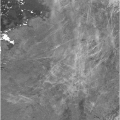Characteristics of Vector-Borne Infections Potentially Transmitted in Aircraft |
|---|
Disease |
Major Vector(s) |
Person-to-person Spread |
Infectivity |
Incubation Period |
Illness Duration |
Untreated Lethality |
Vaccine/Antisera Available? |
Effective Antibiotics? |
Common Geographic Location(s) |
|---|
Babesiosis (Babesia sp) |
Ticks |
No (transfusable) |
High |
1 wk-12 mo |
Days to months |
Low (except if asplenic) |
No |
Yes |
North America, Europe |
Bartonellosis (Bartonella bacilliformis) |
Sand flies |
No (transfusable) |
High |
16-22 d (up to 4 mo) |
Days to weeks |
High/moderate (10%-90%) |
No |
No |
Peru, Ecuador, and Colombia (600-2800 m ASL) |
Dengue fever |
Mosquitoes; aerosol |
No |
High |
3-14 d (usually 5-7) |
Days to weeks |
Low |
Experimental |
No |
Tropics |
Viral encephalities |
Eastern equine encephalitis |
Mosquitoes; aerosol |
No |
High: 10-100 organisms |
5-10 d |
1-3 wk |
High |
Yes |
No |
Americas |
Russian spring-summer encephalitis |
Milk; mosquitoes; aerosol |
No |
High: 10-100 organisms |
8-14 d |
Days to months |
Moderate |
Yes |
No |
Asia |
Venezuelan equine encephalitis |
Mosquitoes; aerosol |
Low |
High: 10-100 organisms |
2-6 d |
Days to weeks |
Low |
Yes |
No |
Americas |
Western equine encephalitis |
Aerosol |
No |
High: 10-100 organisms |
1-20 d |
1-3 wk |
Low |
Yes |
No |
Americas |
Hanta pulmonary syndrome |
Aerosol |
No |
Assumed moderate |
3 d-2 mo (usually 2-4 wk) |
9-17 d |
High (40%-50%) |
No |
No |
Southwest United States |
Hemorrhagic fevers |
Chikungunya |
Aerosol |
No |
High |
2-6 d |
2 wk |
Very low |
Experimental |
No |
Southeast Asia, India |
Korean (Hantaan) |
Body fluids; aerosol |
No |
High |
4-42 d |
Days to weeks |
Moderate |
Experimental |
No |
Asia |
Lassa |
Body fluids; aerosol |
Moderate |
High |
10-14 d |
1-4 wk |
Low to moderate (1% overall) |
No; antisera experimental |
Antivirals |
Africa |
Omsk |
Water; aerosol |
Rarely |
High |
3-7 d |
7-10 d |
Low |
Experimental |
No |
Western Siberia |
Leishmaniasis, cutaneous (Leishmania and Viannia sp) |
Sand flies |
Rarely |
Assumed low |
1 wk-mo |
Months-1 yr |
Low |
No |
Yes |
South and Central America, Asia, Central Africa, Dominican Republic, Mediterranean basin |
Leishmaniasis, visceral (Leishmania and Viannia sp) |
Sand flies |
Rarely |
Assumed low |
10 d-2 yr (usually 2-6 mo) |
Can be prolonged |
High |
No |
Yes |
South and Central America, Asia, Central Africa, Dominican Republic, Mediterranean basin |
Lyme disease (Borrelia burgdorferi) |
Ticks |
No (transfusable) |
Low |
3-32 d (first stage may be asymptomatic) |
Weeks to years |
Low |
No |
Yes |
North America, Europe, Asia |
Malaria (Plasmodium sp) |
Mosquitoes |
No (transfusable) |
Low |
7-30 d (depends on type and may be delayed) |
Attacks: days; recurrences: years |
Falciparum high; others low |
No |
Yes |
Localized, but worldwide (see CDCa website) |
Relapsing fevers (Borrelia sp) |
Ticks and lice |
No |
Low |
5-15 d (usually 8) |
1-10 relapses of 2-9 d of fever with 2-4 d between bouts |
Low/moderate (10%) |
No |
Yes |
Localized, but worldwide |
Rift Valley fever |
Mosquitoes; infected biologicals; aerosol |
Low |
High |
2-5 d |
Days to weeks |
Low |
Yes |
No |
Africa |
Rocky mountain spotted fever (Rickettsia rickettsii) |
Ticks |
No |
High |
3-14 d |
2-3 wk |
High (25%) |
No |
Yes |
The United States (April-September) |
Tularemia (Francisella tularensis) |
Mosquitoes, ticks, deerflies; infected biologicals; aerosol |
No |
High: 10-50 organisms |
1-14 d (usually 3-5) |
>2 wk |
Moderate (10%) |
Yes |
Yes |
North America, Asia, and Europe |
Typhus (epidemic) |
Lice |
No |
High |
6-16 d |
Weeks to months |
High |
No |
Yes |
Colder areas; especially during war or famine |
Typhus (scrub) |
Mites |
No |
High |
4-15 d |
6-21 d (usually 10-12) |
Usually low; but some strains are 60% |
No |
Yes |
Central, eastern and Southeast Asia, and South Pacific |
Yellow fever |
Mosquitoes; aerosol |
No |
High |
3-6 d |
1-2 wk |
High, if jaundiced (50%), rest are moderate |
Yes |
No |
Africa, South and Central America |
a CDC, Centers for Disease Control and Prevention. |








